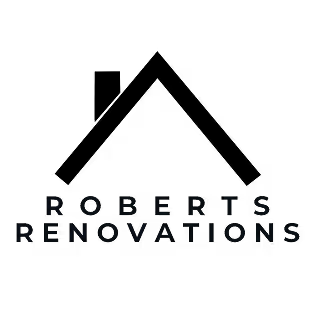What Is ROI in Property Investment?
Return on investment (ROI) tells you how much profit a property generates compared to the money you’ve put into it. For property investors, ROI helps measure the performance of a buy-to-let, flip, or renovation project — and ultimately guides better decision-making.
At Roberts Renovations, we always aim for a minimum of 10% ROI over a five-year period. This figure factors in rental income, estimated costs, and forecast capital growth.
If a property doesn’t meet that threshold, we walk away.
How to Calculate ROI on a Rental Property
There’s no universal method, but the most common ROI formula looks like this:
ROI = (Net profit ÷ Total investment) × 100
Let’s walk through an example based on one of our recent assessments in Bradford:
- Purchase price: £120,000
- Renovation costs: £20,000
- Total investment: £140,000
- Monthly rent: £950
- Annual rent: £11,400
- Annual costs: £2,280 (10% letting agency fee) + £1,140 (10% maintenance) = £3,420
- Net rental income: £7,980
- ROI from rental alone: (£7,980 ÷ £140,000) × 100 = 5.7%
That’s before we factor in capital appreciation. Rental income will be significantly less when factoring a mortgage on a property.
Factoring in Capital Appreciation
Capital growth is a key driver of ROI over time. For our own models, we use Savills' forecast of 28.2% house price growth over the next 5 years. For a £120,000 property, that’s a potential gain of £33,840.
When this is added to your net rental income, your 5-year ROI can comfortably exceed 10%, assuming market performance holds. We base our forecasts on five-year local trends, reviewing postcode-specific appreciation and investing only in areas that have outperformed the regional average.
If you’re looking for help identifying the right area and deal, our property sourcing service is built on exactly this approach.
Explore our location-specific pages to see where we currently invest:
- Leeds Property Investment
- Bradford Property Investment
- Wakefield Property Investment
- York Property Investment
Estimating Real-World Costs (Don’t Get Caught Out)
Accurate ROI depends on realistic assumptions. We use a few golden rules in our own forecasting:
- 10% of monthly rent for maintenance: Covers basic repairs. If the property is older or has structural issues, budget more.
- 10% for letting agent fees: This includes rent collection and tenant sourcing. Some landlords reduce costs by self-managing, but that requires time and legal know-how.
- 2–3% extra if you want agents to manage maintenance too: They’ll coordinate the repairs, but you still pay for the work.
- Mortgage interest: If you buy through a limited company, expect higher mortgage rates for the first six months.
- Initial rates can be 8–10%
- After six months, re-mortgaging usually drops to ~5.5%
- We buy with cash and mortgage later — our preferred method for maximising ROI
Rental Yield vs ROI: Why ROI Tells the Bigger Story
Rental yield is an important first indicator, but it doesn’t show the full picture.
- Yield = annual rent ÷ property value
- ROI = annual profit (after costs) ÷ total cash invested
A property with a strong yield might have high ongoing costs, poor capital growth, or major void periods. ROI helps you balance short-term income with long-term equity gains.
We covered rental yield in depth in our Rental Yield Explained blog — this new post is the natural next step.
Key Factors That Influence ROI
ROI is shaped by more than just rent minus costs. Here’s what to pay attention to:
- Location and tenant demand: Research areas with long-term capital growth and strong rental demand
- Renovation scope: Properties in need of work offer the best opportunities to add value
- Running costs: Energy efficiency, ongoing repairs, and service charges can eat into your margins
- Capital growth trends: We analyse 5-year capital growth by postcode and avoid areas under the regional average
- Financing method: As mentioned above, mortgage interest can significantly impact your ROI
Strategies to Improve Your ROI
We’ve found these practices help improve performance:
- Invest in renovation potential: A property needing modernisation can offer £20,000+ uplift with a £10,000 spend
- Avoid emotional decisions: Treat it like a business. Look at numbers, not personal preferences. It is about finding the right investment below market value, giving you an instant equity boost.
- Raise rent annually in line with inflation: We review every year and increase by 3% to stay ahead of costs
- Consider adding space or converting layouts: For HMOs and family lets, maximising usable space adds value
Final Thoughts on Measuring ROI
ROI isn’t just a spreadsheet number. It’s a guiding metric that helps you:
- Stay focused on your investment goals
- Avoid deals that "look nice" but don’t deliver
- Balance yield with capital growth
- Make more informed buy, renovate, or hold decisions
Remember, property investing is never risk-free. But by using a consistent, informed ROI model — like the one we’ve built through real-world experience — you’re much more likely to succeed.
For support sourcing your next property, planning a renovation, or reviewing an investment opportunity, contact us for a no-pressure chat.
Disclaimer: This blog reflects our personal experience and investment strategy. We are not qualified financial advisors, mortgage brokers or accountants. Always seek professional advice before making financial decisions.
Frequently Asked Questions
What is a good ROI for rental property in the UK?
We target 10% over five years, combining rental income and capital appreciation. This balances risk and reward effectively.
Should I factor mortgage payments into my ROI?
Yes. While rental yield calculations exclude mortgage payments, ROI is about real returns, so mortgage costs must be included.
How do I account for rental increases over time?
We assume a 3% annual increase, aligned with inflation, but recommend reviewing your market annually for accuracy.
Is capital appreciation guaranteed?
No, but forecasts such as Savills’ 28.2% growth over five years are useful benchmarks. Local market research is essential.
What costs should I budget for beyond purchase price?
Factor in renovations, ongoing maintenance, letting agent fees, mortgage costs, and potential void periods.


.jpeg)




